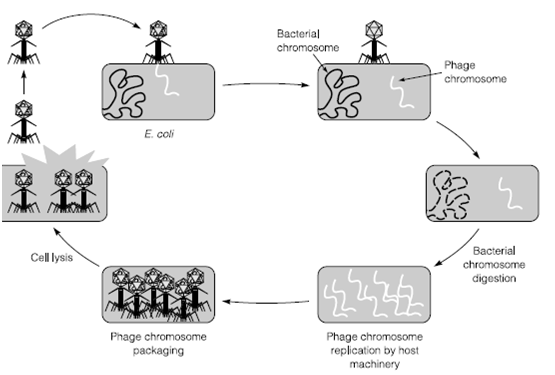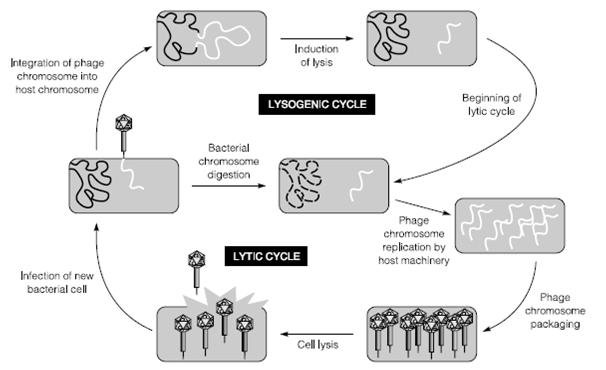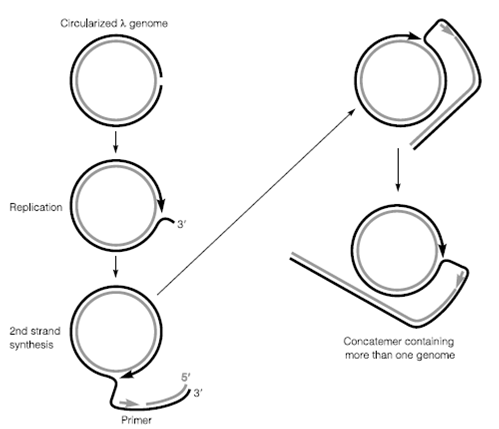The lysogenic cycle
The problem of killing the host that allows replication is overcome by the lysogenic phages, exemplified by bacteriophage λ. Free virions attach and inject their genome into

Figure: Replication cycle of a lytic bacteriophage.
the cytoplasm in the same way as the virulent phages, but then have the option of either establishing a carrier population among the host cells, or replicating, lysing, and reinfecting. On entry to the host cytoplasm, the cos sites at either end of the λ genome allow the molecule to circularize into a plasmid-like form. At this point the bacteriophage can replicate and lyse the cell much as T4 does, or enter into a form that perpetuates as the host divides.

Figure: The lysogenic cycle of bacteriophage
The carrier or lysogenic state results from the integration of the entire l genome into the host genome by recombination. The regions of homology allowing the recombination are found in the center of the l genome, and are known as att sites. The phage genome (in this state known as a prophage) is replicated as a single copy during each round of host cell division so that l is passed vertically through the generations. To ensure that new colonies of hosts can be infected, a stimulus related to DNA damage (ultraviolet light, chemical mutagens, etc.) Induces a further recombinational event to excise the phage DNA from the host. The replication cycle then follows a lytic path, with digestion of the host genome, phage genome replication, phage head protein formation, and packaging until the host cell is lysed and phage progeny are released. However, the mechanism by which the λ genome is copied differs considerably from bacterial replication.
The replication of the λ genome is not accomplished using a bidirectional replication fork. Instead, the plasmid-like cytoplasmic form is copied by rolling circle replication. This allows copies of the genome to be made in one direction only, but results in a long double-stranded, multi-copy molecule. This then has to be cleaved to yield individual genomes ready for packaging, but has the advantage of being very rapid.

Figure: Rolling circle replication of the phage l genome.